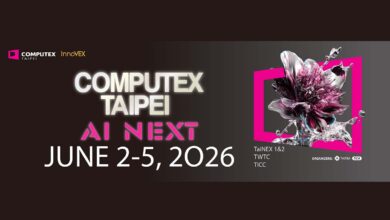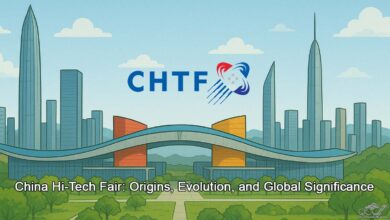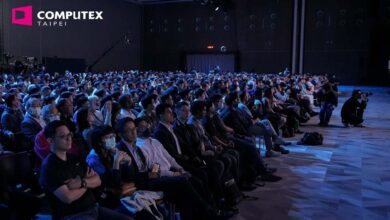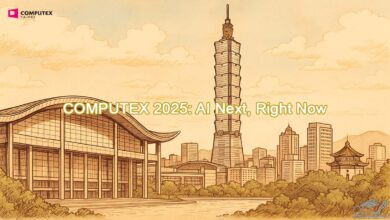The semiconductor industry has witnessed one of its most dramatic power shifts in recent years, with Intel (once the undisputed king of silicon) struggling to maintain relevance while Nvidia has soared to become the world’s most valuable company. In September 2025, Nvidia extended a surprising $5 billion lifeline to its struggling rival, marking a historic collaboration that could determine Intel’s survival. This partnership represents more than just financial assistance; it’s a strategic alliance that could fundamentally reshape both companies’ futures.
Intel’s Crisis: A Perfect Storm of Challenges
Intel’s current predicament stems from multiple converging factors that have transformed the once-dominant chipmaker into a company fighting for survival. The company reported a staggering $19 billion loss in 2024 its worst performance on record followed by an $821 million deficit in Q1 2025. This financial hemorrhaging has forced Intel to implement drastic cost-cutting measures, including laying off 15% of its workforce (approximately 15,000 employees) and suspending dividend payments for the first time since 1992.
The root of Intel’s troubles lies in several strategic missteps. The company failed to capitalize on the mobile computing revolution sparked by the iPhone in 2007, missed the artificial intelligence boom that propelled Nvidia to new heights, and struggled with manufacturing delays that allowed competitors like Taiwan Semiconductor Manufacturing Company (TSMC) to surpass Intel’s technological leadership. Meanwhile, Advanced Micro Devices (AMD) has steadily eroded Intel’s market share in both personal computers and data centers.
Perhaps most damaging has been Intel’s foundry business, Intel Foundry Services (IFS), which has become a massive drain on resources. The division posted operating losses of $7 billion in 2023 on revenues of $18.9 billion, with losses expanding to $2.83 billion in Q2 2024 alone. More troubling, Intel admitted it has secured “zero significant external foundry clients” and warned it might exit chip manufacturing entirely if it fails to attract major customers.
The Nvidia Lifeline: A Strategic Partnership
On September 18, 2025, Nvidia announced it would invest $5 billion in Intel common stock at $23.28 per share, taking approximately a 4-5% stake in the company. This investment, combined with a comprehensive technical collaboration, represents a crucial lifeline for Intel. The announcement sent Intel’s stock soaring 30% in premarket trading, providing much-needed relief to investors.
The partnership encompasses two critical areas that could revitalize Intel’s business:
Data Center Solutions: Intel will design custom x86 CPUs specifically for Nvidia’s AI infrastructure platforms, with both companies’ chips connected through Nvidia’s proprietary NVLink technology. This high-speed interconnect is essential for AI workloads that require multiple chips to work in unison, giving Intel access to the lucrative AI data center market where it currently has minimal presence.
Consumer Computing: Perhaps even more significant for Intel’s long term prospects, the companies will develop “Intel x86 RTX SOCs” system-on-chips that integrate Intel CPUs with Nvidia RTX GPU chiplets. These hybrid processors could provide Intel with a competitive edge against AMD, which has been gaining market share in both desktop and laptop segments.
Strategic Benefits: Beyond Financial Relief
While the $5 billion investment provides immediate financial relief, the strategic implications run much deeper. The partnership addresses several of Intel’s most pressing challenges:
Market Access: Nvidia’s collaboration gives Intel direct access to the AI computing market, where Nvidia maintains overwhelming dominance. By creating processors optimized for Nvidia’s AI platforms, Intel can participate in the AI infrastructure buildout that has driven much of the semiconductor industry’s recent growth.
Manufacturing Utilization: Intel’s foundry capacity has been severely underutilized, with some estimates suggesting utilization rates as low as 50-70% across various facilities. The Nvidia partnership could provide the volume needed to improve these metrics, though the deal notably does not include Nvidia manufacturing its chips at Intel foundries.
Technology Differentiation: The NVLink integration gives Intel processors unique capabilities that could differentiate them from AMD alternatives. This high speed chip-to-chip communication technology is crucial for AI applications and could make Intel processors more attractive to enterprise customers.
Ecosystem Validation: Nvidia’s investment serves as a powerful endorsement of Intel’s x86 architecture at a time when the industry is increasingly exploring alternatives like ARM-based processors. This validation could encourage other customers to consider Intel’s offerings.
Government Support: A Parallel Lifeline
The Nvidia partnership follows another crucial development: the U.S. government’s $8.9 billion investment in Intel through the CHIPS Act. This government backing, which gives the U.S. a 9.9% stake in Intel, reflects the strategic importance of maintaining American leadership in semiconductor manufacturing.
The government investment was structured to provide Intel with flexibility while ensuring accountability. Unlike typical venture investments, the government stake comes with minimal governance requirements but includes safeguards to prevent Intel from spinning off its foundry business without consequences. This support, combined with Nvidia’s partnership, provides Intel with over $13 billion in new capital and strategic backing.
Manufacturing Renaissance: The Long-Term Play
Intel’s survival ultimately depends on its ability to regain manufacturing leadership and attract external foundry customers. The company has invested over $100 billion in new fabrication facilities, including advanced EUV capable fabs in Arizona and Ohio. However, these investments have yet to generate meaningful returns, contributing to the company’s massive losses.
CEO Lip-Bu Tan has implemented a more disciplined approach to capacity expansion, stating there will be “no more blank checks” for new manufacturing nodes without confirmed customer demand. The company has delayed or canceled several facility projects in Germany, Poland, and Ohio while focusing resources on proven opportunities.
The 18A manufacturing process, Intel’s most advanced node, represents a critical test of the company’s technological capabilities. Success with 18A could attract the major customers needed to make the foundry business viable, while failure could force Intel to exit manufacturing entirely. Early indications suggest Intel is taking a more cautious approach, waiting for customer commitments before fully ramping production.
Competitive Implications: Reshaping the Industry
The Nvidia-Intel partnership has immediate implications for the broader semiconductor landscape. AMD, which competes with both companies in different market segments, saw its stock decline 5% following the announcement as investors worried about increased competitive pressure. The partnership directly targets AMD’s strengths in both CPU and GPU markets.
For TSMC, the collaboration represents a potential long-term threat. While Nvidia currently manufactures its flagship processors at TSMC, the Intel partnership opens the possibility of eventually shifting some production to Intel foundries if the company can demonstrate competitive capabilities. This diversification would reduce Nvidia’s dependence on Taiwan-based manufacturing, addressing geopolitical risks.
The partnership also validates the continued importance of the x86 architecture at a time when ARM-based alternatives are gaining traction in both data centers and personal computers. By combining Intel’s x86 ecosystem with Nvidia’s AI leadership, the collaboration reinforces the relevance of traditional PC architecture in the AI era.
Challenges and Risks
Despite the promising aspects of the Nvidia partnership, significant challenges remain. Intel must execute flawlessly on multiple fronts simultaneously: restoring manufacturing competitiveness, reducing operational costs, and developing competitive products for AI workloads. The company’s track record of execution challenges raises questions about its ability to deliver on ambitious promises.
The foundry business continues to hemorrhage cash, with cumulative losses of $25.8 billion since 2023 against revenues of $45.5 billion. Intel must demonstrate it can attract and retain major external customers while competing against TSMC, which maintains technological leadership and higher utilization rates.
Manufacturing capacity utilization remains problematically low across Intel’s facilities, with newer EUV-capable fabs operating at 60-70% capacity. Without significant increases in demand from both internal and external customers, these expensive facilities will continue to generate losses rather than profits.
The Path Forward: Execution is Everything
Nvidia’s investment provides Intel with breathing room, but salvation requires flawless execution across multiple dimensions. The company must successfully ramp its 18A manufacturing process while simultaneously developing competitive products for AI workloads and reducing operational costs.
The partnership’s success will largely depend on customer acceptance of the integrated x86 RTX products and Intel’s ability to manufacture Nvidia designed processors competitively. Early customer wins could create a virtuous cycle of increased utilization, improved margins, and additional investment in advanced capabilities.
Intel’s leadership under CEO Lip-Bu Tan faces the enormous challenge of simultaneously restructuring operations, ramping new technologies, and competing in rapidly evolving markets. The company’s ability to streamline decision making and accelerate innovation will be crucial to capitalizing on the Nvidia partnership.
The Nvidia-Intel collaboration represents a remarkable reversal of fortunes in the semiconductor industry. For Intel, it offers a potential path back to relevance in the AI era. For Nvidia, it provides access to manufacturing diversity and x86 ecosystem benefits. Whether this partnership can truly save Intel depends on execution something the company has struggled with in recent years. The stakes couldn’t be higher, as failure could mark the end of one of Silicon Valley’s most iconic companies, while success could restore Intel to its position as a semiconductor leader in the age of artificial intelligence.
From our perspective, this partnership is not just a rescue, but a true test of Intel’s ability to learn from its past mistakes. If Intel makes good use of the support from Nvidia and the U.S. government, we may witness a strong comeback for the silicon giant. But if it fails in execution, Nvidia will have secured an even stronger position on Intel’s ruins.



